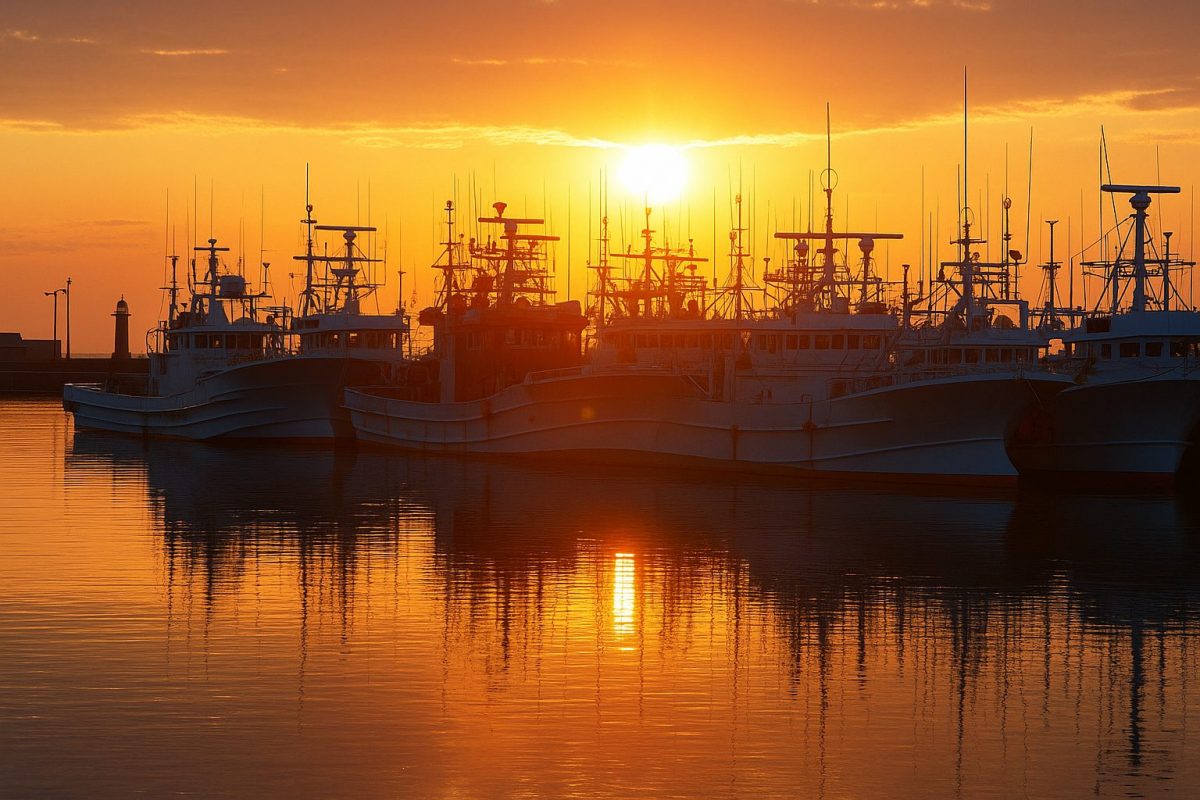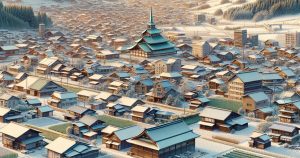| 人口 | 4,175人 |
|---|---|
| 面積 | 397.72 km² |
| 人口密度 | 10.5 人/km² |
Located on the southeastern side of the Shiretoko Peninsula, Rausu Town in eastern Hokkaido is a gateway to the UNESCO World Natural Heritage Site “Shiretoko.” Deeply influenced by Ainu culture, Rausu retains the pioneering spirit of the Meiji and Showa eras. The town’s main industry is fishing, with abundant catches of salmon, kelp, walleye pollock, squid, and Atka mackerel. The people of Rausu live in harmony with nature, balancing their livelihoods between the rich seas and rugged mountains that define this land.
Rausu is one of the few places in Japan where you can experience both the sea and mountains so closely. Behind the town rises Mount Rausu (1,660 m), while the vast Rausu Sea stretches toward Kunashiri Island. Each season paints the landscape with new colors—flowing ice in winter, misty mountains in spring, lush greenery in summer, and fiery foliage in autumn. The people here, shaped by harsh winters and bountiful seas, are warm and resilient. In every aspect—fishing, tourism, hot springs, and festivals—Rausu embodies the spirit of coexistence with nature that defines the Shiretoko region.
Cultural Heritage & Traditions
Rausu’s culture is rooted in both the Ainu traditions and Hokkaido’s pioneering history. Fishing remains the cornerstone of the local economy, and the sea continues to sustain life. The region’s signature product, Rausu kombu (kelp), is regarded as one of Japan’s highest-grade kelps, prized by top chefs nationwide for its deep, umami-rich flavor. In recent years, ecotourism has flourished—whale, killer whale, and bear-watching cruises attract visitors from around the world who come to witness Rausu’s wild nature firsthand.
Locals still use regional Hokkaido dialects in daily conversation, and Ainu words and customs are preserved in certain traditions. Festivals play an important role in maintaining this cultural identity. During the summer Rausu Shrine Festival, portable shrines and colorful floats parade through town, bringing people together in celebration. Events like the Shiretoko Rausu Kelp Festival and the Rausu Industry & Isaribi Festival highlight local pride, showcasing seafood dishes and cultural performances. Through these activities, the people of Rausu honor their ancestors and their enduring connection to the land and sea.
Local Specialties
- Rausu Kelp (羅臼昆布): Harvested along the nutrient-rich Rausu coast, this kelp is thick, aromatic, and exceptionally flavorful. It’s the gold standard for making dashi (Japanese soup stock) and is renowned in Kyoto’s traditional cuisine.
- Rausu Seafood: The meeting of the Oyashio (cold current) and the Okhotsk Sea currents creates one of the richest fishing grounds in Japan. Local specialties include salmon, Atka mackerel, walleye pollock, squid, and sea urchins. The depth and sweetness of flavor make Rausu seafood truly distinctive.
- Rausu Hot Springs: The famous Kuma-no-Yu Onsen offers an open-air natural bath beside a mountain stream. The sulfur-rich water is gentle on the skin and known for its healing effects, surrounded by untouched forest scenery.
- Venison (Ezo Deer): Locally sourced venison from the Shiretoko forests is lean, rich in protein, and free of gamey odor. It’s enjoyed in gourmet dishes like venison steak and hearty stews.
- Diamond Dust: In midwinter, when the temperature drops below −15°C, countless ice crystals sparkle in the air like stardust—a breathtaking natural phenomenon symbolizing Rausu’s pure, cold beauty.
Annual Events
- Shiretoko Snow Wall Walk (April): Held at Shiretoko Pass when the mountain road reopens after winter. Visitors can walk between towering snow walls up to several meters high—a unique experience found only in Rausu.
- Rausu Shrine Festival (July): Rausu Shrine hosts one of the town’s biggest summer celebrations. The event features traditional performances, floats, and sea processions honoring the local deities.
- Shiretoko Rausu Kelp Festival (July–August): A celebration of the kelp season featuring cooking demonstrations, tasting booths, and hands-on experiences that highlight the pride of the local fishing community.
- Rausu Industry & Isaribi Festival (September): A festive showcase of local seafood, crafts, and music. As night falls, fishing boats illuminate the harbor with their glowing “isaribi” lights, followed by a fireworks display over the sea.
- Drift Ice & Winter Wildlife Season (January–March): During winter, drift ice arrives off the Rausu coast. Visitors can take nature cruises to observe Steller’s sea eagles, spotted seals, and orcas amid the ice floes—a world-class winter spectacle.
Access
- By Air: The nearest airports are Kushiro Airport and Nakashibetsu Airport. From Nakashibetsu, Rausu is about 90 minutes by car.
- By Bus: Akan Bus operates routes connecting Kushiro, Nakashibetsu, and Rausu (approximately 3–4 hours). Service frequency varies by season.
- By Car: Accessible via National Routes 334 and 335. In summer, you can cross Shiretoko Pass to reach Shari Town, but note that the pass is closed in winter due to heavy snow.
- By Sea: Rausu Port serves as a departure point for sightseeing cruises and research vessels exploring the Shiretoko coastline.
Main Attractions
- Shiretoko Pass – Offers panoramic views of Mount Rausu and Kunashiri Island. The sunset from this high-altitude road is unforgettable.
- Mount Rausu – The highest peak of the Shiretoko Range. Popular among climbers and nature lovers for its alpine flora and sweeping vistas.
- Lake Rausu – A serene lake surrounded by primeval forest, known for its mirror-like surface and hiking trails.
- Kuma-no-Yu Hot Spring – A free open-air bath nestled in the forest, beloved by locals for its rustic charm and natural steam.
- Rausu-Kunashiri Observatory Tower – A scenic viewpoint overlooking Kunashiri Island, featuring exhibitions on Shiretoko’s ecology and geopolitics.
- Shiretoko World Heritage Rusa Field House – The information gateway for visitors entering the restricted World Heritage area, focusing on conservation and safety.








